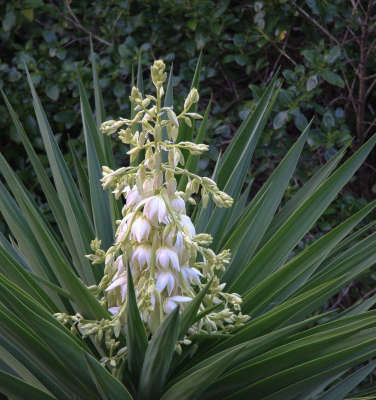

Yuccas are handsome desert shrubs with unusually thin, swordlike foliage for a succulent, making them a useful specimen plant in a layered, textured garden bed. Give them full sun and well-drained soil, and yuccas will be happy in a hot climate even if temperatures top 100 degrees Fahrenheit.
Yuccas often get confused with agaves, because both are succulent shrubs that grow in clumps in the desert (and in dry gardens in warm climates) and both send up occasional spikes of flowers. Here’s how to tell the difference:
Yuccas have long, thin leaves that look like knife blades (as opposed to agave’s plumper, swollen leaves) and some varieties—such as Joshua trees—have trunks that make them look more like trees than shrubs. While agaves bloom once in a lifetime, yuccas can flower repeatedly over the course of several seasons.
Yuccas are useful to add stature and drama in a xeriscape, requiring little water and no maintenance beyond a sunny spot and well-drained soil. With more than 50 different species, yuccas will thrive in a wide range of climates, from USDA growing zone 4 (where Yucca filamentosa ‘Bright Edge’ is a perennial) to zone 11 (where Y. gloriosa var. recurvifolia will brave the heat with its theatrical spikes of creamy white flowers).
Tip: Plant yuccas well away from walkways so pedestrians can avoid their sharp, swordlike foliage.